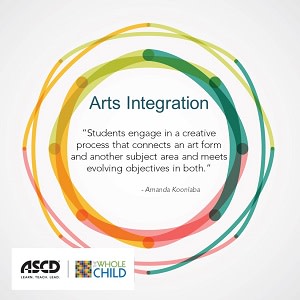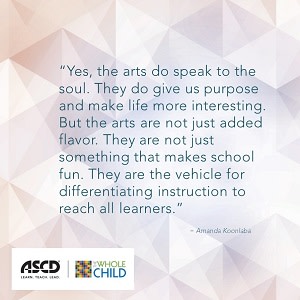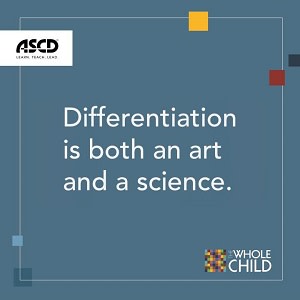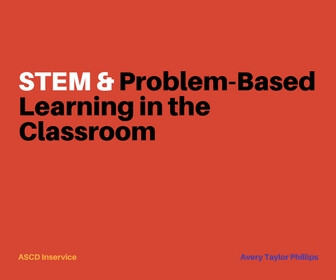Curriculum design is a rewarding process which enables teachers to have professional conversations about the intended and taught the curriculum. In addition to horizontal alignment, curriculum design provides educators with the opportunity to discuss what is essential at other grade levels and courses. My experiences with curriculum design and observing the work of teacher teams in other school systems have led me to identify the following barriers. With proper planning, budget allocations, scheduling, communication, and support from district administrators, each of these barriers can be removed.
1. The Absence of a Curriculum Framework
Curriculum design is complicated. Most teachers believe that they can write curriculum, because they write lesson plans, design formative assessments, and have spent their entire career planning curriculum and instruction. According to Fenwick English (2000), “Curriculum is any document that exists in a school that defines the work of teachers by identifying the content to be taught and the methods to be used” (p.2). The lines become blurred when a school district asks teacher leaders from twelve different elementary schools to write curriculum. Each teacher approaches the project from a different lens.
Barrier-Breaking:
There are multiple frameworks that support curriculum designers. Wiggins and McTighe introduced educators to Understanding by Design (1998). Heidi Hayes Jacobs has provided templates and online tools to support curriculum mapping. H. Lynn Erickson wrote Concept-Based Curriculum and Instruction and outlined how to design a thinking curriculum. “Teachers in thinking classrooms understand how to use concepts to integrate student thinking at a deeper level of understanding – a level where knowledge can be transferred to other situations and times” (Erickson, 2007, p. 22). There are countless frameworks to choose from. The key to removing this barrier for educators is to select a framework.
2. Change
Change occurs in every facet of life. However, change can greatly impact curriculum design. When a superintendent resigns it can change the course of curriculum work. The new superintendent may select a different framework or abandon the existing curriculum documents. Standards have become a focus across the nation. When policymakers change standards, curriculum designers must align the curriculum with new standards and this often requires starting over. As school districts focus on new skills to emphasize or magnet programs highlight STEM or leadership themes, school staff will need to revise the curriculum to meet the program goals.
Barrier-Breaking:
School leaders are wise when they design an archive or a website that houses the district’s curriculum documents. Curriculum design requires constant change and moving parts. If a new principal is hired in the middle of the school year, he or she should be able to identify the district’s curriculum in a timely manner. While we cannot stop the forces of change, we can focus on organization, communication, timelines for curriculum revision, and storing curriculum units. Consistency in how we support teaching and learning allows all educators to have a clear understanding of the written curriculum. If the framework or template changes with each standards revision, then it will be an additional ingredient to throw into the change stew.
3. Communication Tools
A major barrier to curriculum design and implementation is a lack of communication. A school district may identify twelve – twenty teacher leaders to serve on a district curriculum committee. The committee may meet for twelve months or up to two years. At the end of the period, a curriculum document is distributed to all of the teachers in the school district. While months of conversations and deliberation went into the document, the experts are the committee members. Districts need to stop handing documents (hard copy with shrink wrap or electronic) to teachers and expecting the document to transform teaching and learning. The teachers who implement the curriculum need to be able to ask questions, post suggestions, and explain the strengths and weaknesses of the curriculum. Curriculum deliberation should not be finished when the committee adopts the final edits.
Barrier-Breaking:
Online tools make it easy for curriculum leaders to remove this common barrier. Google Docs, Google Forms, LiveBinders, Padlet, Today’s Meet, Google Hangout, Web sites, and Voxer are among the tools that educators can use to communicate. Online programs are also available for purchase. The written curriculum is critically important. However, educators need to have an opportunity to discuss the implemented curriculum, even if they were not part of the original design team. Wiggins and McTighe (2007) wrote, “Schooling at its best reflects a purposeful arrangement of parts and details, organized with deliberate intention, for achieving the kinds of learning we seek” (p. 9). If the curriculum design is not reaching its desired intentions, classroom teachers need a mechanism to share observations and make recommendations. Continuous improvement is not possible if teachers are only able to communicate at face-to-face meetings or during the curriculum writing process.
4. Focus on the Product
When educators participate in curriculum development they often focus on completing the curriculum map. Curriculum design should be viewed as a process, rather than a product. If K-12 curriculum developers take the approach that curriculum will never be finished, then they will constantly strive to make the curriculum rigorous, relevant and differentiated. Continuous improvement should be valued more than finishing a curriculum document. Some principals and district administrators rush the process because there is an urgency to have an aligned curriculum. While the product should be aligned to the standards, teacher-friendly, and focused on the district’s priorities, the product should not de-emphasize the process.
Barrier-Breaking:
“Curriculum development is the essential function of school leadership. Whether the role is carried out by a principal, an assistant principal for curriculum, a team leader, a department head, or by leading classroom teachers, the curriculum defines all other roles in a school” (Wiles, 2009, p.2). The process should be made transparent to teachers, administrators, and stakeholders. Most school districts have board policies outlining how the curriculum will be designed and adopted. The policies are written in vague terms. School leaders should utilize websites and online tools to share the curriculum design process for each curriculum document. Finally, school leaders need to be careful about the message they send to curriculum designers. If the message is to complete this document in twelve months, then the focus will be on meeting the product deadline, rather than the design process.
5. Funding
Curriculum design comes with a price tag. Expenses include fees for substitute teachers, stipends for summer work, meeting spaces, printed documents, consultant fees, and implementation/professional development. A document for K-5 English Language Arts can cost thousands of dollars, depending on the size of the school district. Funding is a barrier but is necessary to support teaching and learning.
Barrier-Breaking:
School districts need to place curriculum design as a top priority in the annual budget. Aligning curriculum to the standards and determining what is essential at each grade level is important work. Most school districts follow a curriculum design and implementation timeline. In other words, they will design curriculum for science in 2016 and begin design work for math in 2017. Curriculum writing and revision is ongoing, but the budget can be allocated to specific content areas every five years. “One of the tasks of curriculum leadership is to use the right methods to bring the written, the taught, the supported, and the tested curriculums into closer alignment, so that the learned curriculum is maximized” (Glatthorn, 1987, p. 4).
6. Hidden Curriculum
The ‘hidden curriculum’ is the unintended curriculum. “It defines what students learn from the physical environment, the policies, and the procedures of the school” (Glatthorn & Jailall, 2009, p. 110). Most teachers and administrators don’t recognize the hidden curriculum, because it is ‘the way we do business.’ There are messages in every school that interfere with the written curriculum. The way that students are treated when they enter school is part of the hidden curriculum. The rules or lack of rules throughout the school sends a message to students. The ability of parents to voice their concerns and recommendations is part of the hidden curriculum.
In a school that administers common formative assessments on a regular basis, a student may ask the teacher, “Why do we have tests every three weeks?” If the teacher replies, “We want all of our students to be prepared for the End-of-Grade tests in the spring,” then the ‘hidden’ message will imply that the purpose for school is to prepare for a single test. The message educators want to send is that learning is an ongoing process and their intention is to develop lifelong learners. However, the answer that the teacher provided indicates that common formative assessments are intended to prepare students for a high-stakes test, rather than a method to assess students’ understanding of the current unit of study.
Barrier-Breaking:
Trying to identify the hidden curriculum is like changing the culture in a nation that is 200 years old. It is difficult to identify the things we cannot see. The following questions will help curriculum design teams identify the hidden curriculum. The answers to these questions will support the ongoing work of curriculum designers.
Questions for Curriculum Design Teams:
1. What are the “hidden” messages that students receive in our school/school district?
2. How do the “hidden” messages interfere with the intended curriculum?
3. What can teachers and administrators do to correct unintended messages?
4. Does the “hidden” curriculum exist in our school?
5. Is it possible to have a “hidden” curriculum every year since educators are humans and humans are not perfect?
7. Time
Curriculum design is a time-consuming process. District administrators struggle to find time to design curriculum because teachers need to be ‘teaching.’ If teachers are asked to teach from 8:00 am – 3:00 pm, and then write curriculum from 4:00 – 6:00 pm, the final product may not be polished. Some school districts have a one week period during the summer months and they attempt to write curriculum in one week. While this method is better than pulling your best teachers out of the classroom, it is not practical. Some school districts attempt to write curriculum units during early release days. The students come to school until lunchtime and then the teachers are asked to write curriculum in the afternoon. It is difficult to focus on curriculum design after teaching school during the morning.
Barrier-Breaking:
A blended approach may be the way to remove the barrier of time. Curriculum design during the summer months seems to be the best time for teachers to reflect, debate, design, collaborate, and analyze the curriculum. It is difficult for teachers to begin writing a curriculum document, or units of study, if they know they are returning to the classroom the next day. If a large portion of the work can be developed in the summer, time can be allocated throughout the school year can be used for reflection, tweaks, and monthly meetings. If I were the Czar of U.S. Education, I would recommend that all school districts provide teacher leaders with an additional one month salary to focus on curriculum design and revision. One month during the summer would support the changes that need to be implemented and teachers would be able to focus on curriculum design rather than completing a product.
Hoping for a quality curriculum is not what our students need. A first-class education begins with answering the question, ‘What should all students know and be able to do as a result of this grade level, course, unit, or lesson?’ Answering this question requires time and deliberation.
8. Tradition
Curriculum design teams need to remove the barrier of tradition. Tradition reminds educators that ‘this is how we have always written curriculum.’ Tradition could be the bell schedule, the sequence of the units, the textbooks we adopt, or the number of days we spend on each unit. If curriculum design begins with tradition, then we will not prepare students for the future. Some traditions are worth keeping. The key is to make certain that tradition is not hindering progress.
Barrier-Breaking:
Wiggins and McTighe wrote, “Planning is best done ‘backward’ from the desired results and the transfer tasks that embody the goals. The 3 Stages (Desired Results, Evidence, Learning Plan) must align for the unit to be most effective." If a curriculum design team is focused on tradition, it will be impossible to begin with the desired results. Schools need to emphasize skills such as critical thinking, collaboration, communication, creativity, and contribution. If traditional approaches are emphasized in the design process, then educators will not focus on the new goals that are emphasized in the standards.
Questions for Curriculum Design Teams:
1. Process: Does our school system have a process for curriculum design?
2. Ongoing Communication: Does our school system use technology to support ongoing collaboration and professional conversations regarding K-12 curriculum decisions?
3. Hidden Curriculum: What is the ‘hidden curriculum’ in our school?
4. Time: When are teachers provided time to develop and reflect upon the written, taught, and understood curricula?
5. Time: When would teachers prefer to design new curriculum?
6. Process: Do we spend more time developing curriculum than we do discussing its implementation and student results?
7. Implementation: What processes are in place when teachers and administrators identify gaps in the curriculum? In other words, do teachers still go through a five-year curriculum development process or can gaps be addressed within the course of the nine weeks?







